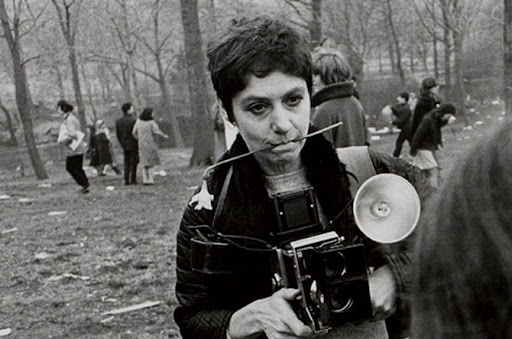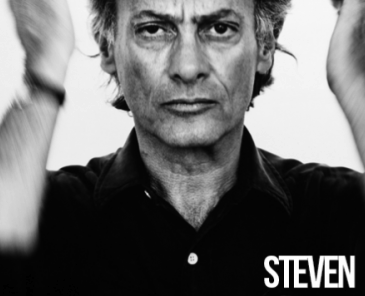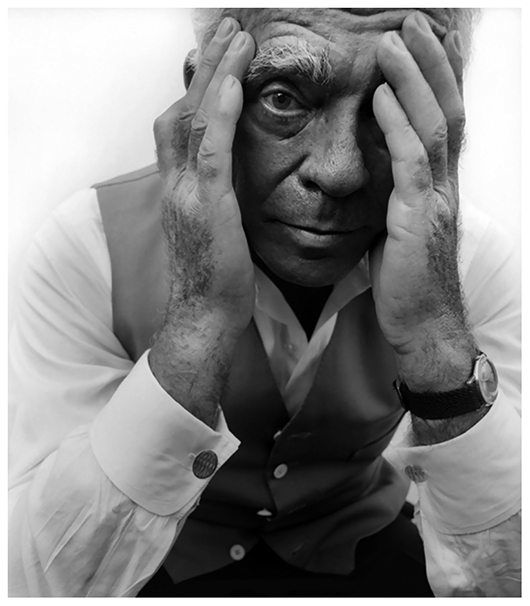Diane Arbus, born Diane Nemerov (New York, March 14, 1923-Greenwich, New York, July 26, 1971) was an American photographer, known as the photographer from freaks, unconventional-looking and socially rejected people. His work has been recognized by institutions such as the Venice Biennale and MOMA, among others.
She was born Diane Nemerov into a wealthy Jewish family in New York. Her father, David Nemerov, was a Polish Jew who had built a thriving fashion business, thus facilitating Diane's first direct and close contact with the field. His older brother, Howard Nemerov, became a poet laureate. At the age of 14, Diane began her relationship with Allan Arbus, whom she married when she was 18 years old, adopting his last name and learning photography with him. They had two daughters, Doon (1945) and Amy (1954) Arbus.
In the 1940s, the couple took up fashion photography for magazines such as Esquire, Vogue and Harper's Bazaar. In 1945 they founded the photographic studio Diane & Allan Arbus. Being a woman at the time, it was unusual for it to appear in the studio's name. Later, when she began to publish her own works, she was quickly recognized, receiving two grants from the Guggenheim Foundation for her work American Rites, Manners, and Customs, so that she could continue developing her career as an artist and photographer.
From 1955 to 1957, he studied with the Austrian photographer Lisette Model, who greatly influenced his later work. Model focused Arbus on new ways of technically working with photographs and looking at photographed objects and subjects with new eyes. He considered her the best disciple he ever had.
In 1959 she separated from Allan when he fell in love with another. It was devastating personally although his photographic work won. They divorced in 1969.
In addition to Model, other Arbus influences are Berenice Abbott, with whom he studied photography, and also Robert Frank, Louis Faurer and Alex Brodovitch.
In July 1960, Esquire was the first magazine to decide to publish Arbus's photographs, and from this decade on he began the most productive stage of his career, changing his objective completely . She considered the world of fashion very artificial, so she decided to start photographing on the streets. He scoured the dangerous slums of New York to select the characters to portray, which included unconventional-looking people and social outcasts such as dwarfs, giants, nudists, strippers, transsexuals, transvestites, and prostitutes. She began to be known as the freaks' photographer.
In 1967 he participated with thirty photographs in the New Documents exhibition, carried out by John Szarkowski for the Museum of Modern Art in New York, together with the also talented Lee Friedlander and Garry Winogrand. This exhibition made it known to the majority public. Success came and his works were acquired by institutions such as the National Library of France. He continued to work for major magazines shooting celebrities such as Norman Mailer, Mae West, and Jorge Luis Borges.
In his later years he focused on images of people with intellectual disabilities who were confined to institutions. In 1971, after a long depression, Diane Arbus committed suicide at the age of 48. A year later, posthumously, her work was selected to participate in the Venice Biennale, this American being the first photographer to be selected. for the prestigious show. The MoMA in New York organized its first major retrospective of a total of 112 photographs in 1972.
Arbus experienced mental, emotional, and depressive episodes similar to his mother's, and perhaps worsened by hepatitis. In 1968, Arbus wrote "I'm up and down a lot," and had violent emotional swings. On July 26, 1971, while living at the Westbeth Artists Community in New York, Arbus ended his life by swallowing barbiturates and slitting his wrists. She was found by Marvin Israel two days later. He was 48 years old.
Influenced by Model and by Tod Browning's film Freaks, Diane Arbus abandoned the elegant models of fashion magazines and he chose marginal, different and eccentric people to be portrayed: twins, mental patients, giants, dysfunctional families, circus freaks, prostitutes, transvestites, etc. People looked directly at the camera, making the flash clearly reveal their most characteristic features. Arbus managed to prevent the viewer from identifying with the sitters, as he managed to provoke fear, shame and discomfort.
She pioneered fill flash (day flash).
Arbus's photography represents the normal as monstrous, but with the intention of showing a reality and rebelling against everything conventional and 'safe': when he photographed pain, he found it in people normal. It caused supposedly normal people to appear as abnormal and monstrous beings.
Arbus's way of photographing broke up the composition, placing the character in the center, whose gaze was always direct, with tension and strength. For her there was no such thing as a decisive moment, she worked in a continuous space-time and she wanted her models to be fully aware that they were being photographed and that they were participating in the photographic action. That is why, before taking the photographs, she talked to people and maintained direct contact in order to capture what she was looking for: a new look, going from tedium to fascination.
Her work has influenced subsequent generations of creators such as Cindy Sherman, Nan Goldin, Robert Mapplethorpe, Gillian Wearing and Joel-Peter Witkin.
(Source Wikipedia)








 English (United Kingdom)
English (United Kingdom)